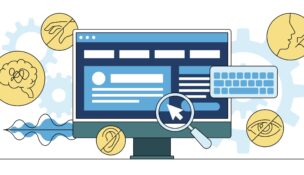Exploring the Potential of AI Bots in HR — Tips for Leveraging Technology in Employee Communications
Learn how AI can help HR leaders save time and increase productivity while avoiding sensitive topics that require a personal touch.
Sarah Grimstead //March 13, 2023//


Exploring the Potential of AI Bots in HR — Tips for Leveraging Technology in Employee Communications
Learn how AI can help HR leaders save time and increase productivity while avoiding sensitive topics that require a personal touch.
Sarah Grimstead //March 13, 2023//
Artificial Intelligence (AI) bots have taken over the Internet. Beginning with the launch of ChatGPT from Microsoft, many professionals have explored the tool’s capabilities – which has HR leaders wondering about the applications of AI bots in their field.
With AI bots capable of composing emails and even lengthy articles, HR leaders can rely on them to generate first drafts of employee communications; however, they should keep a few key factors in mind.
READ: AI in Employment — A Troubling Issue in the Hiring Process
Leverage AI as a tool
Like any other technology, AI bots should be viewed as a tool that can make the jobs of HR leaders easier. In the past several decades, technology has revolutionized employees’ daily work lives many times over with computers, personal laptops, cloud-based systems, smart phones and more. The transition to each of these technologies involved a great deal of planning and, in many cases, hesitations from workers accustomed to the old way of doing things.
While it is impossible to predict the future of AI bots and HR, HR leaders should remember AI is yet another tool at their disposal. The impact of AI bots on HR will depend on how HR teams choose to use it.
There are many small ways that an AI bot could save time for HR leaders to focus on a task that requires a human touch. For example, when HR needs to focus on conflict resolution or teambuilding, which cannot be outsourced to AI bots, they can ask AI to generate the first draft of a job posting to attract qualified candidates.
Develop a coherent and coordinated policy
Keep in mind, nearly every office worker will have the opportunity to use AI bots for some portion of their tasks. In some cases, workers may begin using AI bots to lighten their load without ever raising the subject with a manager. It is important for teams to discuss how they plan to use AI bots, not only to avoid pitfalls but to share best practices for improving efficiency. With productivity on the decrease in the past several years, AI bots could be one tool to halt the slowdown.
READ: How to resist distraction and boost productivity
Even within the same teams, policies on AI bots may differ depending on what kind of work an employee is producing. For instance, HR departments may approve AI-generated internal communications but feel reluctant toward allowing employees to use AI bots for client-facing emails or public social media posts. It is important for organizations to establish the ground rules of AI use within the policy, such as when it is acceptable for use, how the content generated should be edited and outline the review process.
Don’t lose the personal touch
HR leaders need to think about the right times to use AI bots – but also, the wrong times. Any discussion of a sensitive or personal subject should raise a red flag on the use of an AI bot to generate communications.
Even if the recipient of an email cannot tell it was written by an AI bot, they may feel differently once they find out the true author. That is often doubly true for emails and communications around sensitive subjects, such as the loss of a coworker, a round of layoffs or a national or local emergency. Using AI bots to write those types of messages can also turn into a PR disaster.
Employees take messages on sensitive matters to heart and may feel hurt, angry and even disrespected when they learn HR leaders passed off the words of an AI as their own, instead of thoughtfully engaging with the topic. It could be risky to generate a first draft of sensitive communication, even if substantial edits are made.
That applies not only to serious situations but also to moments for celebration, like a job offer or promotion. Write these communications without relying on an AI bot, or at minimum, use AI bot-generated copy in these situations as loose inspiration instead of a first draft. For now, employees are still growing comfortable with the use of AI, so the better choice is to write highly personal messages from scratch.
By thinking carefully about how they engage with ChatGPT and other AI bots, HR professionals can navigate this new technological territory with ease.
 Sarah Grimstead is a regional vice president with Insperity, a leading provider of human resources offering the most comprehensive suite of scalable HR solutions available in the marketplace. For more information about Insperity, call 800-465-3800 or visit www.insperity.com.
Sarah Grimstead is a regional vice president with Insperity, a leading provider of human resources offering the most comprehensive suite of scalable HR solutions available in the marketplace. For more information about Insperity, call 800-465-3800 or visit www.insperity.com.






















